It’s 50 years since the prototype diesel Kestrel first graced the British Rail network, but after four years it was sold to Russia. The Railway Magazine presents the story of the big bird that flew too far, its life behind the Iron Curtain and the locos it inspired in the USSR.
As we saw in Part 1, by 1969/70 British Rail policy for future motive acquisition began to emerge and it became clear the days of the all-purpose mixed-traffic diesel locomotive were drawing to a close. Kestrel fitted none of the new requirements and with no overseas orders either, the future for Kestrel was looking bleak indeed.
However, in 1971 events took an unexpected turn. Two years previously, a Soviet railway delegation from the Ministry of Ways & Communications (MPS) had visited the United Kingdom, as part of a programme of exchange of expert groups.
The diesel traction group was led by Dr N A Frufrianskii, who was both deputy director of the All-Union Railway Scientific Research Institute (VNIIZhT) and head of the railway research and test centre at Shcherbinka, 30km south of Moscow.
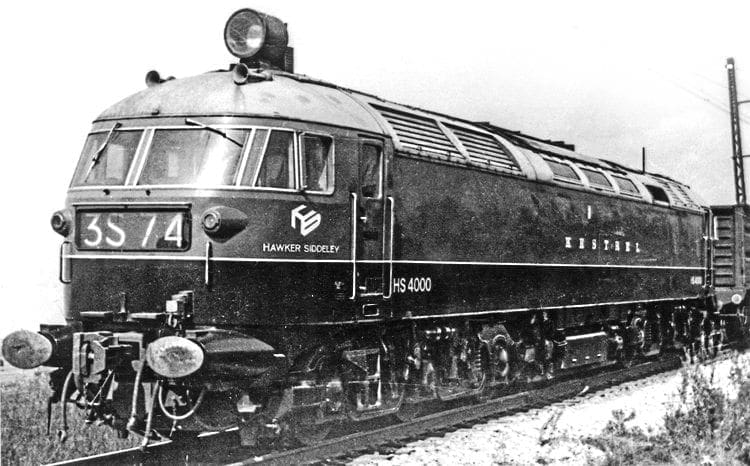
One of the Soviet visits was to the Brush works at Loughborough, where Kestrel was on display. Frufrianskii’s party was greatly impressed by the innovative features: its AC-DC transmission, electronic control system, electro-dynamic brakes, fault indicator system, and two-stage suspension that made the locomotive suitable for both passenger and freight service.
The cab design and level of crew comfort was also far in advance of anything to be found on Soviet locomotives.
Chance meeting
In Frufrianskii’s own words “Kestrel incorporated all that was best in world diesel locomotive design and construction, and fundamentally new technical ideas. It was the shape of things to come.”
A few days later, at a chance encounter in London, Mr F Beasant, head of Brush Traction, asked Dr Frufrianskii whether the USSR would be interested in buying Kestrel.
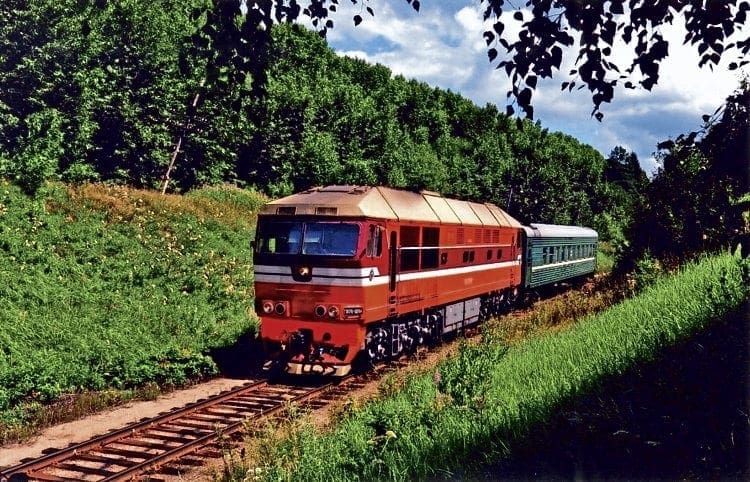
We do not know whether the offer was made simply as a means of disposing of an increasingly unwanted child, or whether Beasant hoped for a production series order in due course.
If the latter, he may not have been aware that Soviet industrial policy had been, since the early-1920s, to buy or otherwise acquire, small numbers of prototypes from the West, deconstruct them and incorporate their best features in an equivalent home-grown product.
In that way hard currency was saved, industrial jobs were created at home and technical experience gained. Beyer, Peacock, Alco, Baldwin and Fairbanks, Morse had all learnt that lesson the hard way.
Frufrianskii replied cautiously that as a member of a scientific institute he had no power to make purchasing decisions but undertook to make a favourable report to the MPS on his return to Moscow.
That he did, recommending that negotiations should be opened with Brush Traction. The stated objective was to see how Kestrel performed under Soviet railway conditions by comparison with the current front-line passenger locomotive, the Class TEP60.
The unstated objective was to stimulate the ultra-cautious Soviet locomotive building industry where managerial success was measured by building “more of the same” to meet production quotas rather than dabbling with new and untried designs.

The MPS took the decision in principle to buy early in 1971. The question was how much to pay, and to that end a somewhat roundabout approach was adopted. Hawker Siddeley, the parent company of Brush Traction was invited to exhibit Kestrel at the forthcoming International Rolling Stock Exhibition at Shcherbinka between July 1-20 of that year.
It would be an operating exhibit and this was the first of an occasional series of such exhibitions, which continue to this day. The Russians, tough negotiators at all times, were aware that the cost to Brush of returning Kestrel to the United Kingdom would be a strong bargaining counter in getting the locomotive at a realistic price.
Guarantee
Kestrel’s final recorded working from Shirebrook depot was on January 29, 1971, though there were almost certainly further unrecorded workings in February-April. The total mileage on British soil was 136,646.
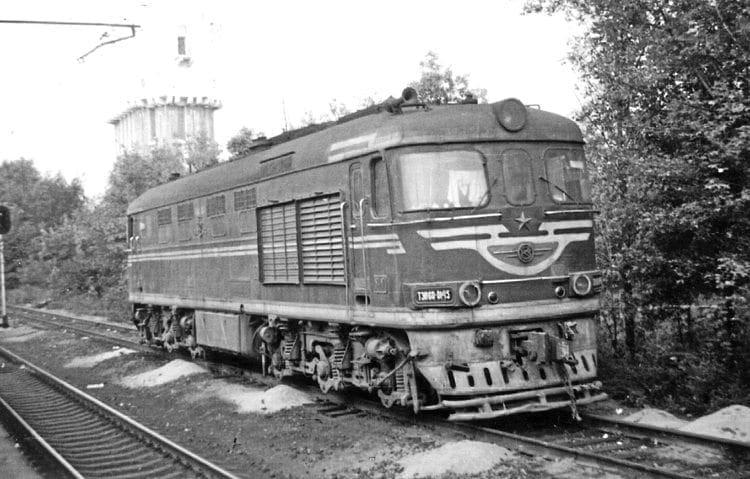
By this time locomotive construction and repair had ceased at Loughborough, the track connection to BR had been severed and the rail traction staff dispersed to other work. The preparatory work for shipment would have to be carried out elsewhere.
Thus Kestrel arrived at Crewe Works on April 22, where the principal task was changing the wheel sets of the original bogies to the Soviet 1520mm gauge, and the cabs were boarded over to protect them during the sea voyage.
On June 7, Kestrel, mounted temporarily on a set of Class 47 bogies, left Crewe diesel depot for Cardiff Docks. The locomotive was hoisted on to the freighter Krasnokamsk by the Cardiff heavy lift floating crane on the June 11.
On arrival at Leningrad (now St Petersburg) a few days later, Kestrel was reunited with its bogies for the 900km journey south, though whether it was hauled or went under its own power is not known.
Meanwhile, three-way negotiations between Brush, the deputy director of the MPS, and the import-export firm of A A Maksimov had been taking place. The Brush demand was for £205,820, of which £158,750 was for the locomotive itself.
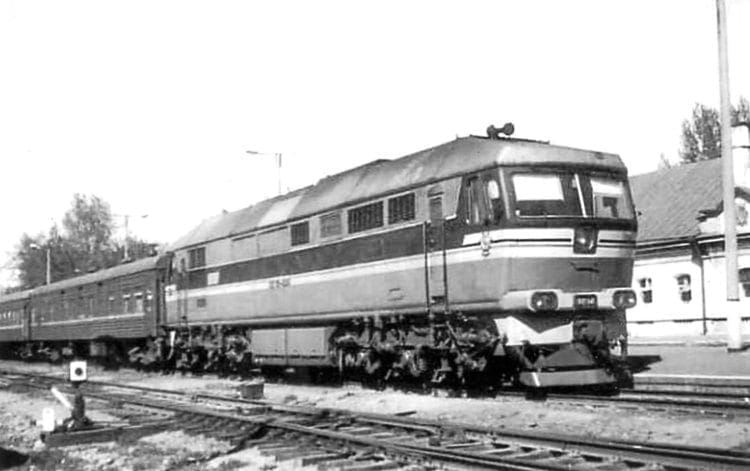
The balance was made up of the electrical equipment, spare parts and £15,000 due to Sulzer for the diesel engine. A four-month guarantee was offered. These conditions were not acceptable to the Soviet side, especially the short guarantee period.
It would take longer than that for technical instructions and other data to be translated into Russian, for the technical staff to familiarise themselves with a locomotive that was well in advance of anything else operating in the USSR, and for trial runs to be carried out.
It was a fine balancing act. The price had to be sufficient to persuade Brush to send Kestrel to Moscow, yet the Russians could not be seen to overpay for western technology.
In the end, a compromise was reached: £127,000 for the locomotive, a longer guarantee period and with Brush engineers on call to rectify any serious defects that might arise.
A difference of opinion over the insistence by Brush on the use of Shell Talona 972 lubricating oil seems to have been resolved in Brush’s favour. Kestrel was formally handed over during the Shcherbinka Exhibition by the chairman of Brush, Mr F H Wood.
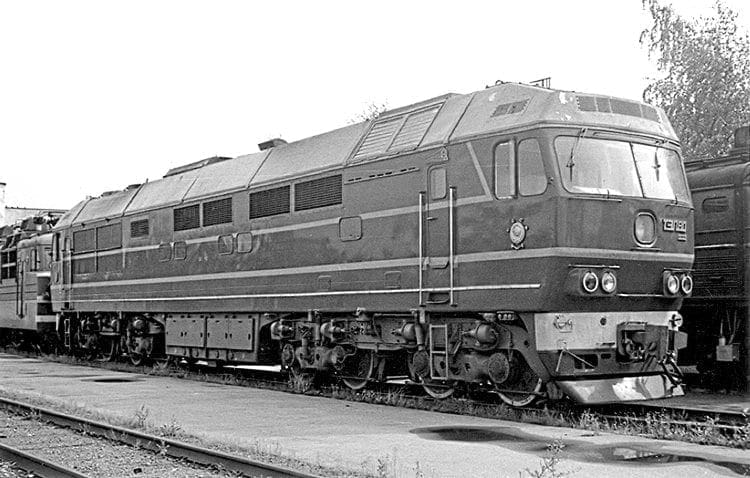
Once the exhibition was finished, Kestrel appears to have been based at the October Railway’s Varshavski diesel depot in Leningrad. There was a period for crew familiarisation, following which a series of road tests were initiated during the period April to September 1972.
Twenty-four runs on regular passenger trains of 1,000 to 1,100 tonnes were made between Leningrad and Tallinn (Estonia) and between Leningrad and Pskov, services that would have normally had been hauled by 3,000hp Class TEP60 locomotives.
Freight trials were also held to make comparisons with standard 4,000hp TE3 Class twin-section locomotives on trains averaging 2,500 tonnes at speeds up to 80 kph (50mph).
Test results showed that Kestrel used more fuel than the TEP60, partly because it was operating at less than full power on fairly easy TEP60 train loads and schedules.
These tests were curtailed, Frufrianskii noted, because of several failures in the advanced electronic control system, which Brush engineers had to travel to Russia to solve.
Two further series of tests were carried out in 1972/73 – this time not in public service – to gather comprehensive data upon further aspects of the locomotive. The first were dynamic tests to assess Kestrel’s riding qualities and effect upon the permanent way.

These tests were carried out on the Ozerskaya branch near Kolomna (the largest of the locomotive manufacturing plants) and on a stretch of high-speed line between Belorechenskaya and Maikop.
The second set of tests was on the 6km circuit at Shcherbinka, where Kestrel’s power plant, cooling system, electrical machinery and electronic control systems were assessed. Ease of maintenance tests were also carried out.
The latter showed the Kestrel design had a number of disadvantages from the Russian point of view.
If the driver was standing up, the tops of the cab windows were too low for the sighting of signals. Internal passageways were cramped by Russian standards. The bogies were considered overly massive.
The Russians also disliked the spot-welded stressed skin construction, which they believed to be a weakness in the event of corrosion – even though such bodies had been in everyday use in Great Britain for some 15 years.
It was considered that if the Kestrel design was to be adopted for mass production the interior layout would need to be substantially rearranged to take advantage of the more generous Soviet loading gauge.
Despite these criticisms, Frufrianskii’s conclusion was that the purchase of Kestrel had been a well worthwhile exercise. In all, the locomotive ran some 30,000kms in its new home.
There has been a persistent rumour over the years that at one point in the early 1970s, Kestrel crossed the border into Romania and worked between Braşov and Bucharest – but as that would have involved refitting its standard gauge bogies, it can be considered highly unlikely in the absence of photographic evidence.
Test load
During the winter of 1973/74, the principal components of Kestrel were stripped out and sent to various research institutes for further analysis. The unmotored shell was part-filled with concrete and for a while used as a test load for other locomotive trials.

In this form the locomotive lingered on at the back of the Scherbinka establishment, increasingly derelict, as can be seen in the accompanying 1985 photograph. Eventually Kestrel was dismantled for scrap some 20 years later in 1993/94.
For years, British preservationists had hoped against hope that Kestrel, or at least some components, might have survived and could be repatriated.
Earlier this year a ‘sighting’ was posted on an internet forum. No photographic evidence was produced and it might be a coincidence that the post was dated April 1.
Some years ago the Russian traction engineer Oleg Izmerov confirmed to the writer that Kestrel’s 16LVA24 engine had been dismantled.
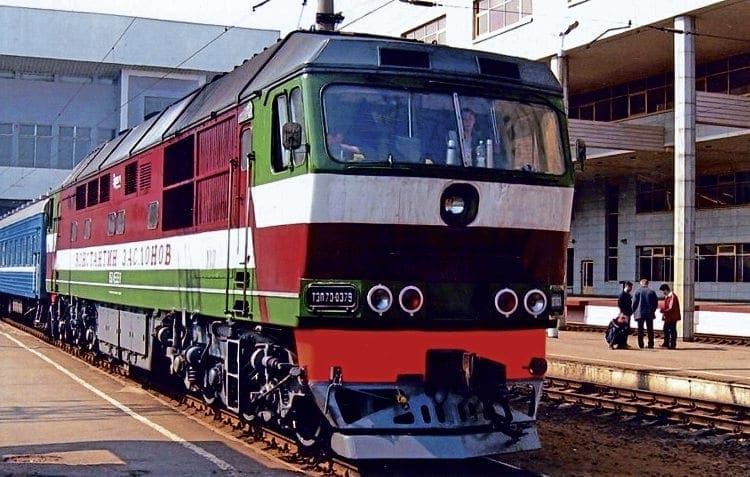
Sulzer’s original test example was also broken up, leaving the three surviving engines in use as standby generators at Swiss and French power plants.
The end of Kestrel’s active existence in the mid-1970s also marked the end of Sulzer’s rail traction division, and thereafter the company concentrated on the production of large marine diesel engines.
At this point we must pause our narrative for a brief look at earlier Soviet main line diesel locomotive development. In the early 1920s, the Soviet Union was the world leader in diesel locomotive technology with several workable prototypes produced, mainly under the direction of Y M Gakkel and the influential Professor Iu V Lomonosov.
Although some developmental work continued after Lomonosov’s 1927 refusal to return to Moscow from an assignment abroad, the momentum was lost and no more orders for diesel locomotives were placed after 1934. (Lomonosov himself, regarded as a traitor by the Soviet Government, spent the rest of his life in Great Britain and North America, dying in Canada in 1952.)
Dieselisation restarted in earnest following the delivery under Lend-Lease in 1944-45 of 70 Alco type RS-1 Co-Co diesel-electric road switchers. They were classified in the USSR as DA (Dizel Alko). The first Soviet-produced diesel-electric was the TE1-20 class, a very close copy of the RS-1.
The class designation stood for Teplovoz Elektricheskoi (Diesel Electric) Type 1, the figure 20 denoting the axleload – a carryover from steam practice. This was followed by the TE2 twin section Bo-Bo+Bo-Bo, mechanically similar to the TE1-20. By Soviet standards both classes were built in penny-packet numbers.
Mass production of freight diesels began in 1955 with the 4,000hp twin-section
Co-Co+Co-Co class TE3, and in the next 18 years the Kolomna and Lugansk locomotive plants turned out no fewer than 6,809 ‘pairs’, the world’s most numerous diesel class.
The TE3 was in turn followed by the 6,000hp 2TE10L of which 3,533 pairs were produced between 1966 and 1977.
Gas-guzzler
Both TE3 and TE10 were equipped with the Kar’kov-designed two-stroke opposed-piston diesel engine, which was a direct copy of the 1930s Fairbanks-Morse diesel produced for the US Navy. It had the advantage of fewer moving parts and was efficient if well maintained, but in the rough and tumble of everyday Soviet railway life it tended to exhaust vast black clouds of partly burnt fuel.
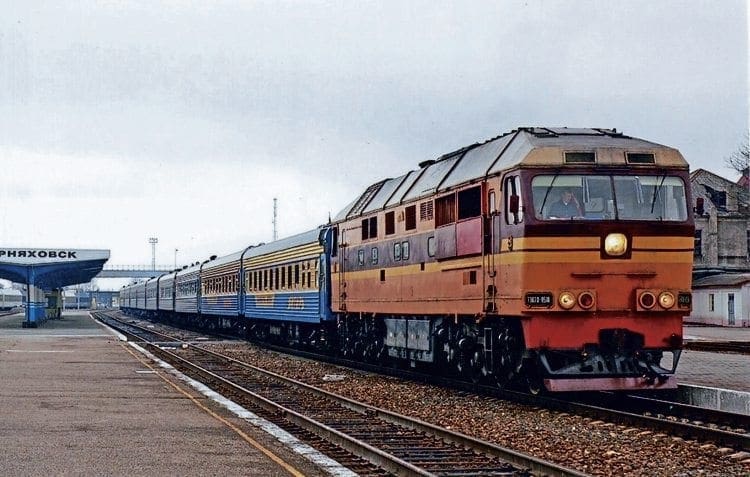
The locomotive historian Rakov regarded the opposed piston design as a gas-guzzler unsuited to rail traction use. No doubt these very conservative locomotives were what Frufrianskii had in mind when he felt that exposure to Kestrel might do something to dispel Soviet locomotive engineering complacency.
All these diesels were for freight services. That was the overriding need as Soviet industrialisation gained momentum. It was not until 1957 that the first passenger class, the TE7, appeared.
It was merely a TE3 re-geared from 100km/h to 140kmh, given some bogie modifications and a flashy bright blue and red livery. It was clearly a stopgap as only 113 pairs were built in the seven years to 1964.
The first purpose-built passenger locomotive was the TEP60, a 3,000hp Co-Co first introduced in 1961. It was highly successful and more than 1,200 were delivered over the next 24 years.
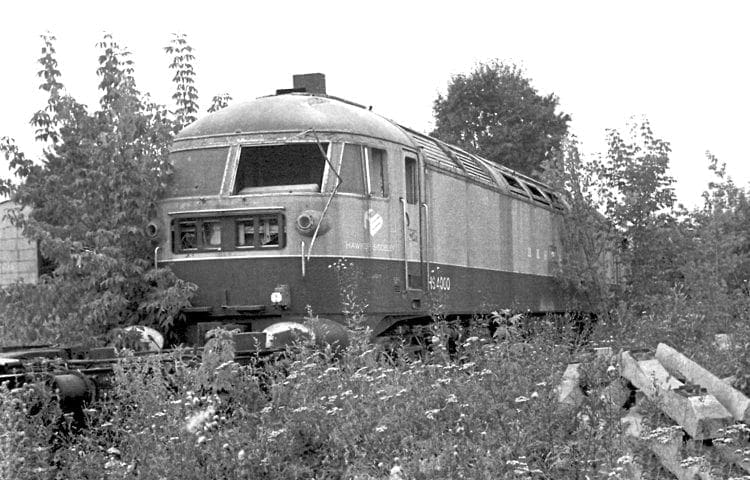
But something more powerful still was needed. If 3,000hp looks like plenty of horsepower to us we should remember that passenger trains in Russia, then and now, are immensely long and heavy for the number of passengers conveyed.
Nearly all consist of massive sleeping cars of 50-55 tonnes apiece, to which are added dining cars and express freight and baggage cars. Trains of 21 vehicles weighing 1,000-1,100 tonnes are not uncommon. To gain additional power a small number of TEP60 pairs were permanently coupled to create a 6,000hp lashup, seen as a temporary solution.
By the time Kestrel arrived in the USSR, work was well advanced on two potential successors to the TEP60, classified TEP70 and TEP75, of which the former went into production (we’ll come to the TEP75 later).
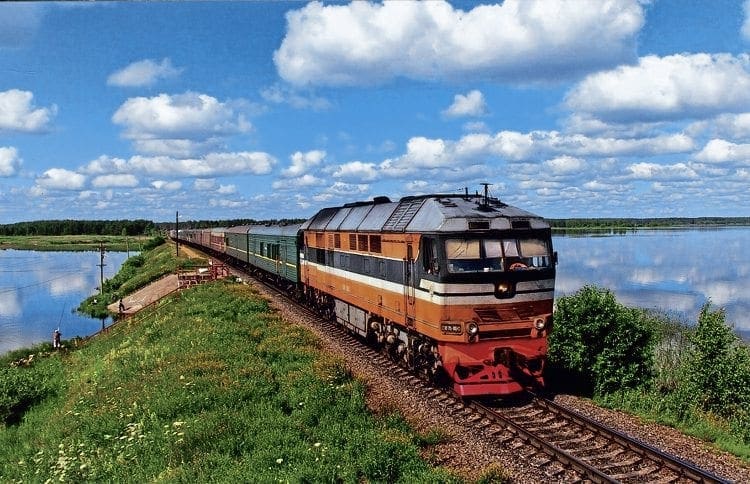
The design of the TEP70 seems to have started at Kolomna in 1969 under constructor-in-chief Yu V Khlebnikov. It was a 135-tonne Co-Co with a maximum speed of 160kmh (100mph), and fitted with the 2,264kw (3,975hp) Kolomna model DA-5D49 4-stroke V16 engine.
The TEP70 prototype was remarkably similar to Kestrel in many ways: wheel arrangement, overall weight, horsepower and the use of a single high-speed V-16 engine. It is simplistic to say that the TEP70 is a Russian Kestrel (even though some British enthusiasts refer to them in that way).
Yet it is not unreasonable to believe the visit to Loughborough in the same year the TEP70 was schemed out, demonstrated to the Soviet engineers that a high-speed 4,000hp passenger diesel was a practical concept.
Where the two prototypes differed markedly was in external appearances, the angular outline of the TEP70 with its flat-panelled ‘mansard roof’ contrasting with the smooth and aerodynamically efficient front end of Kestrel styled by Wilkes & Ashmore.

Work was sufficiently advanced for the first prototype, TEP70-0001, to emerge in late-1973 (entering trial service on February 1, 1974), at a time when engineers were still probing Kestrel’s inner parts.
Six more appeared in the next three years: 0002 in 1974, 0003 and 0004 in 1975, and 0005-0007 in 1976. Initially, they were all allocated to Orsha depot, a major traffic centre in Belorussia (now the independent state of Belarus), where they were thoroughly road tested.
In 1981/82 all seven prototypes were transferred to various October railway track maintenance units, but as non-standard locomotives they became early candidates for withdrawal. All are believed broken up except TEP70-0007 which is now an exhibit at the St Petersburg Railway Museum.
As a result of the Belarus tests the design was extensively modified to incorporate a number of Kestrel’s distinctive features, before series production started in 1978. Visible changes to the bodywork included a modified cab roof and rearrangement of the bodyside ventilator grilles.
The single windscreen was changed to a two-piece divided screen. The central numberplate between the marker lights was replaced by a pair of angled plates at the corners of the body. Total body length of 21,700mm remained the same.
Concentration
Output at Kolomna was slow at first – the works still had the last orders for the 2TEP60s to fulfil – amounting to no more than 17 in the first seven years. Things picked up in the late-1980s: 45 were built in 1987, 46 in 1988, 55 in 1989, 49 in 1990 and 38 in 1991.

By the time of the collapse of the USSR in late 1991, a total of 280 had been delivered. After that, production continued, albeit at a slower pace, averaging about 20 a year. The last to be built was TEP70-0576 in 2006.
In such a vast country with relatively few observers of the current railway scene, comprehensive records of allocation and working are not yet possible, and transfers or withdrawals often go unrecorded. Nevertheless sufficient information is available to form a broad picture.
The majority of the class were to be found in western Russia and the western independent states. Apart from Kazakhstan, the TEP70s did not penetrate the Central Asian or Far Eastern railways to any extent, though there is a recent photograph of one at Komsomolsk-na-Amur on the Pacific coast.
Within Russia proper the largest concentration of TEP70s was on the October Railway, which had about 140 of the class. They operated all the main line services to the south and west from St Petersburg (Vitebsky station) to Minsk and the Baltic states, the cross-country route between Novosokolniki, Bologoye and Yaroslavl and, prior to electrification, a long section of the Murmansk line.
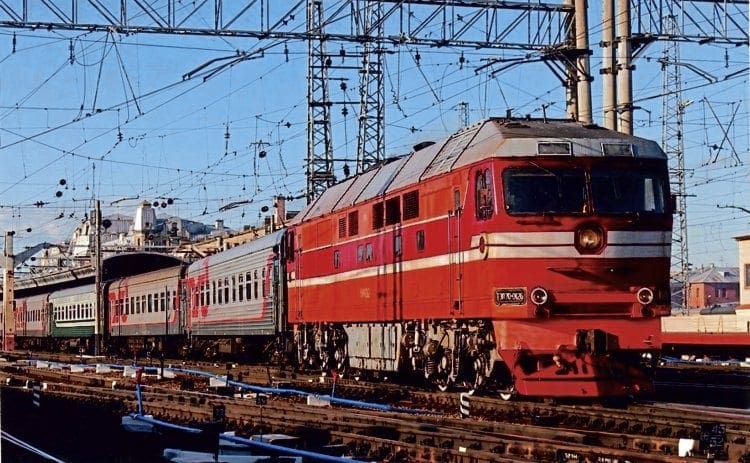
A large contingent of TEP70s went to the Severnya (Northern) Railway, operating passenger trains on the route to Arkhangelsk. They also worked “the world’s longest branch line” to the Arctic mining cities of Vorkuta and Labitnangi.
Those destinations have limited charms but the route has been promoted as the “Polar Circle Line” and at least one TEP70 has been repainted in a special livery of dark and mid-blue.
Other known allocations included the Privolzhskaya Railway (unknown quantity in the Saratov area). Elsewhere, four of the class were based at Kaliningrad, the chief city of the detached Kaliningrad region on the Baltic coast. They worked the principal passenger trains to Moscow, Karkhiv and Gomel.
In the independent states the largest concentration was in the Ukraine, where 67 of the class were split between Osnova, Lubotyn, Smorodyne and Poltava. Belarus had at least 17, possibly more, all based at Orsha.
Poor maintenance
Kazakhstan is understood to be the only Asiatic state with any TEP70s, about 20 early examples all numbered below 0200. Most of them were long out of use with engine failure resulting from poor maintenance.
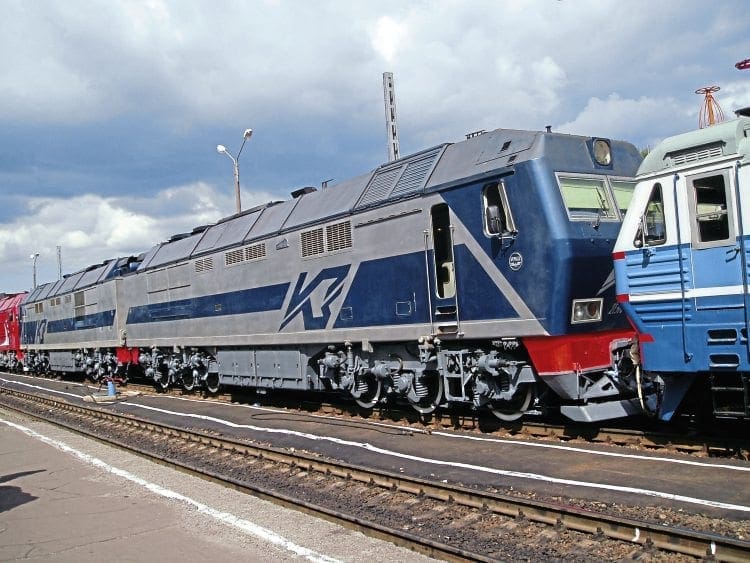
Undoubtedly, the most exotic Kazakhstan allocation is of four TEP70s (0171, 0172, 0196 and 0197) to the Baikonur Cosmodrome at Leninsk, from which all Soviet manned spaceflights were launched.
All three Baltic states found themselves with quantities of TEP70s after the declaration of independence. Latvia had 24, and Estonia and Lithuania four apiece.
The locomotives had mixed fortunes there. Mostly the republics found them expensive to operate, and a lot went into store quite soon. Estonia for example preferred to hire October Railway TEP70s for the regular Moscow and St Petersburg trains, utilising Estonian crews between Narva and Tallinn.
Given the advance of electrification it is difficult to understand the continued production of TEP70s into the present century. It became harder to find routes that could benefit from their massive haulage power. Even 15 years ago it was possible to find TEP70s idling their time away on the secondary lines of the October Railway.
The writer remembers in 2004 seeing TEP70-0189 pottering into Veliki Louki on a three-coach local, a turn that could have been easily handled by a road switcher of quarter the horsepower and half the complexity – or a DMU.
So the Russian Railways generally have a surplus of TEP70s. One correspondent wrote: “Many, even recently built ones, are stored derelict after major engine failures, and a certain amount of number-swapping occurs to avoid paperwork and accounting problems.”
In recent years some have been seen in freight service. Another recent development has been the emergence of a prototype 8,000hp twin-section 2TEP70 geared for freight use.
By contrast there are main line passenger services in some of the more hard-up republics that would benefit from the TEP70s. Lack of capital means they are still headed by ancient freight diesels that should have been written off years ago.
To round off the Kestrel story, a brief mention must be made of the subsequent developments flowing from the TEP70. The first was the class TEP75, of which two prototypes were delivered in 1975/76.
The idea was to achieve in a single unit the same horsepower as the twin-section 2TEP60. This was a 6,000hp (4418kw) Co-Co with a single Kolomna 1D49 V-20 engine, perhaps the most powerful diesel engine ever applied to rail traction.
With the same bodyshell as the TEP70 it is unsurprising that the gross weight turned out at 147 tonnes, 12 tonnes more than the TEP70. The 24.5- tonnes axleload was considered excessive and the project abandoned. Both were broken up.
Ill-fated
The second development was the class TEP80 of the Do-Do wheel arrangement, utilising the same 6,000hp Kolomna engine. Two prototypes were built in 1989/1990. At 180 tonnes gross weight and a longer body they were even heavier than the TEP75, but with a lower axleload of 22.5 tonnes they were considered acceptable. TEP80-0002 holds the world speed record for diesel traction of 271kmh (169.3 mph), achieved in 1993.

Nevertheless it was an ill-fated project. At one point in the mid-1990s it looked likely that the TEP80 would go into series production, but that was not to be. Perhaps there was a realisation that with continuing electrification of major routes the classes would be able to cope for the time being.
Passenger usage had already peaked and privatised airlines were eating into long-distance traffic. Note may have been taken that elsewhere in the world the multiple unit was superseding the locomotive-hauled passenger train.
Since then TEP-0001 has been broken up and -0002, after being laid up with a failed engine, is now a museum locomotive.
It is now unlikely we shall ever see Super-Kestrels in everyday action.
The archive is available to subscribers of The Railway Magazine, and can be purchased as an add-on for just £24 per year. Existing subscribers should click the Add Archive button above, or call 01507 529529 – you will need your subscription details to hand. Follow @railwayarchive on Twitter.


